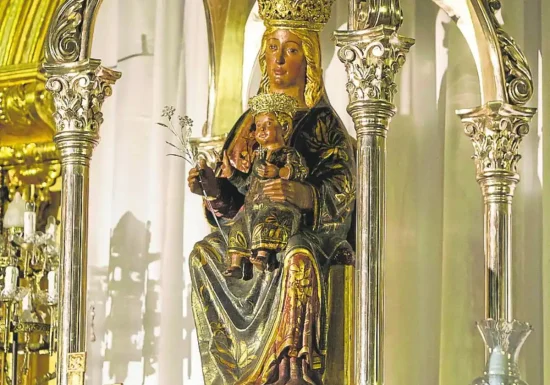 The main opposition party in the City Council of Cartagena, MC, announced that in the next municipal plenary session will ask the City Council to demand «a detailed historical study» of the image of the Virgen del Rosell, dating from the thirteenth century and primitive patron saint of Cartagena. Also, that the Restoration Centre of the Autonomous Community carry out an integral intervention on the carving, «in accordance with its historical-artistic value», by restorers of cultural goods. This request is based on the belief that in 1996 an intervention was carried out to restore it, but «for reasons unknown to us, the General Directorate of Heritage maintains that it was not documented», according to the councillor of this formation María Dolores Ruiz.
The main opposition party in the City Council of Cartagena, MC, announced that in the next municipal plenary session will ask the City Council to demand «a detailed historical study» of the image of the Virgen del Rosell, dating from the thirteenth century and primitive patron saint of Cartagena. Also, that the Restoration Centre of the Autonomous Community carry out an integral intervention on the carving, «in accordance with its historical-artistic value», by restorers of cultural goods. This request is based on the belief that in 1996 an intervention was carried out to restore it, but «for reasons unknown to us, the General Directorate of Heritage maintains that it was not documented», according to the councillor of this formation María Dolores Ruiz.
In a statement, MC stated that the age «could be around fifteen centuries» and that throughout its history «it has undergone various interventions that are considered to be unsuccessful». However, experts consider that the carving corresponds to the prototype of seated Marian sculptures of the 12th and 13th centuries. It would be linked to the creation by King Alfonso X of the military order of Santa María de España, in November 1272, with its headquarters in Cartagena Cathedral.
Ruiz bases his request on the fact that «the file on the restoration of the statue of the Virgen del Rosell, declared an asset of cultural interest, consists of only eight pages and two press clippings, does not contain photographs of the restoration process of the image, nor any report on the intervention carried out». Specifically, it refers to the restoration carried out at the request of the Town Hall in 1996 by the sculptor Manuel Mateo Cuenca. The MC councillor stressed that «if we add the lack of information that has been provided to us about this restoration process, it is easy to verify the fact that during the intervention in the nineties the veil of the Virgin disappeared ‘mimicking’ with the carving of the hair of the image».

It is also interesting to note that although the mayor’s office states that the co-patron saint of the city appears in a catalogue of the few representations of black virgins that exist on the peninsula, she returned from that last intervention «without a restoration report or photos of the intervention, polychrome and with her cheeks rosy».